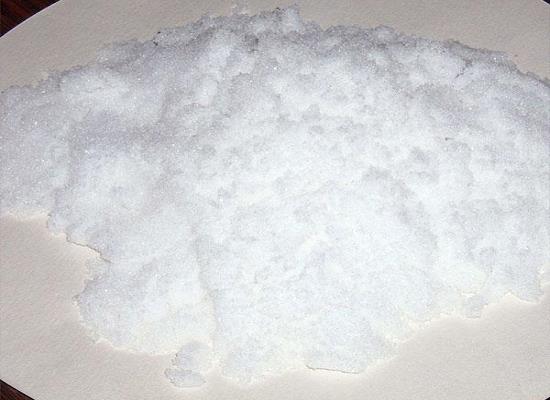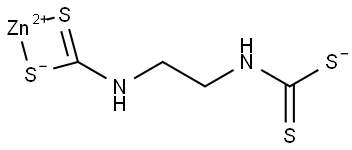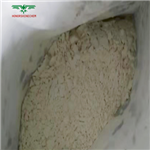Zineb: Overview, Preparation and Toxicological Effects
Apr 1,2024
General Description
Zineb, a widely used fungicide in agriculture, effectively combats fungal diseases, offering plant protection with limited toxicity. Its preparation involves chemical reactions to yield the final product, zineb, presenting an innovative approach to synthesis. However, a study on laying hens exposed to zineb revealed moderate cholinesterase inhibition, altered organ functions, and detectable residue levels in various tissues, highlighting potential toxicological effects. These findings emphasize the importance of responsible usage and careful monitoring to mitigate adverse impacts on non-target organisms and the environment while harnessing zineb's valuable role in crop management.

Figure 1. Zineb
Overview
Zineb is a widely utilized compound in agricultural practices, primarily functioning as a fungicide. Its distinctive chemical structure enables it to effectively combat a wide array of fungal diseases that pose a threat to crops. The active components present in Zineb operate by impeding fungal growth and reproduction, consequently shielding plants from disease-induced harm. Typically administered through spraying or dusting methods, its application varies based on the crop's requirements and the severity of the fungal infestation. Zineb stands out for its exceptional efficacy and relatively limited toxicity towards non-target organisms, rendering it a favored option among farmers. Nevertheless, responsible usage is imperative, adhering to prescribed dosages and application techniques to mitigate any potential adverse environmental repercussions. In essence, Zineb serves as a valuable asset in agricultural management, fostering the cultivation of healthier and more bountiful crops. 1
Preparation
The new process for the preparation of zineb pesticides involves a series of chemical reactions to yield the final product. It begins by reacting 150-210 kg of ethylenediamine, 441-541 kg of carbon disulfide, and 500-590 kg of 40% ammonia in the presence of a stabilizer such as sodium pyrosulfite, sodium sulfite, or sodium hydrosulfite. This reaction yields a compound known as ambis. Next, the ambis is subjected to another reaction with ZnCl2 in the presence of a catalyst such as Bi2(MoO4)3, Ni/Al2O3, or Pol(CO)x. This step results in the formation of the final product, zineb. The first reaction involving ethylenediamine, carbon disulfide, and ammonia in the presence of a stabilizer is crucial for the initial formation of ambis, which serves as a precursor for zineb. The subsequent reaction with ZnCl2 and the catalyst then leads to the conversion of ambis into the desired zineb pesticide. This new process represents an innovative approach to the synthesis of zineb, potentially offering improvements in efficiency, yield, or purity compared to traditional methods. By carefully controlling the reaction conditions and employing specific chemicals as reagents and catalysts, the process aims to streamline the production of zineb while maintaining high quality and consistency in the final product. 2
Toxicological Effects
Zineb, a fungicide belonging to the ethylenebisdithiocarbamate group, is commonly used in agriculture for its protective fungicidal properties. A study aimed to assess the toxicological effects and persistence of zineb in laying hens. During the experiment, hens were exposed to 50 and 100 ppm of zineb in their feed for two months, followed by a one-month recovery period. The results revealed that exposure to zineb led to moderate inhibition of plasma and red blood cells (RBCs) cholinesterase activities, with reductions of 24.4% and 31.0% in plasma and 8.0% and 10.5% in RBCs at the two different doses. Additionally, liver and kidney functions were affected, along with alterations in the lipid profile of the treated hens. Concentrations of total protein and albumin decreased during the experimental period but returned to control values after the recovery period, except for lipid parameters such as cholesterol and triglycerides. Residue analysis of various samples from the laying hens showed detectable levels of the parent compound zineb in whole eggs, fat, liver, muscles, whole blood, and heart tissues. Furthermore, chromatographic analysis identified five degradation products alongside zineb in the samples tested. In conclusion, exposure to zineb in laying hens resulted in various toxicological effects, including cholinesterase inhibition, alterations in organ functions, and the presence of both the parent compound and its degradation products in different tissues. 3
Reference
1. Zineb. National Center for Biotechnology Information. 2024; PubChem Compound Summary for CID 5284484.
2. Huang ZG. New process of preparation of zineb. 2005; Patent Number: CN1648120.
3. Taha H, Abdel-Gawad H. Assessment of toxicological effects and persistence of the fungicide zineb in laying hens. Egyptian Journal of Chemistry. 2006; 49(1): 101-117.
- Related articles
- Related Qustion
- ?Zineb:Uses,Environmental effects,Acute Health Effects Mar 15, 2023
?Zineb is a carbamate fungicide used on edible crops and ornamentals. It has a low aqueous solubility, is relatively volatile and is not expected, based on its physico-chemical propoerties, to leach to groundwater.
- Zineb---Organic sulfur fungicide Jun 17, 2022
Zineb is a protective organic sulfur fungicide. Zineb is safe for plants, chemically active, easily oxidized into isothiocyanate compounds in water.
Supplementation with pyridoxal 5'-phosphate monohydrate can synthesize neurotransmitters such as dopamine and serotonin, maintaining a healthy nervous system.....
Nov 4,2025Biochemical EngineeringOral cinacalcet hydrochloride (HCl) is the first in a new class of therapeutic agents, calcimimetics, and has a novel mechanism of action. Cinacalcet hydrochloride classifies as a "calcimimetic."....
Apr 1,2024API








